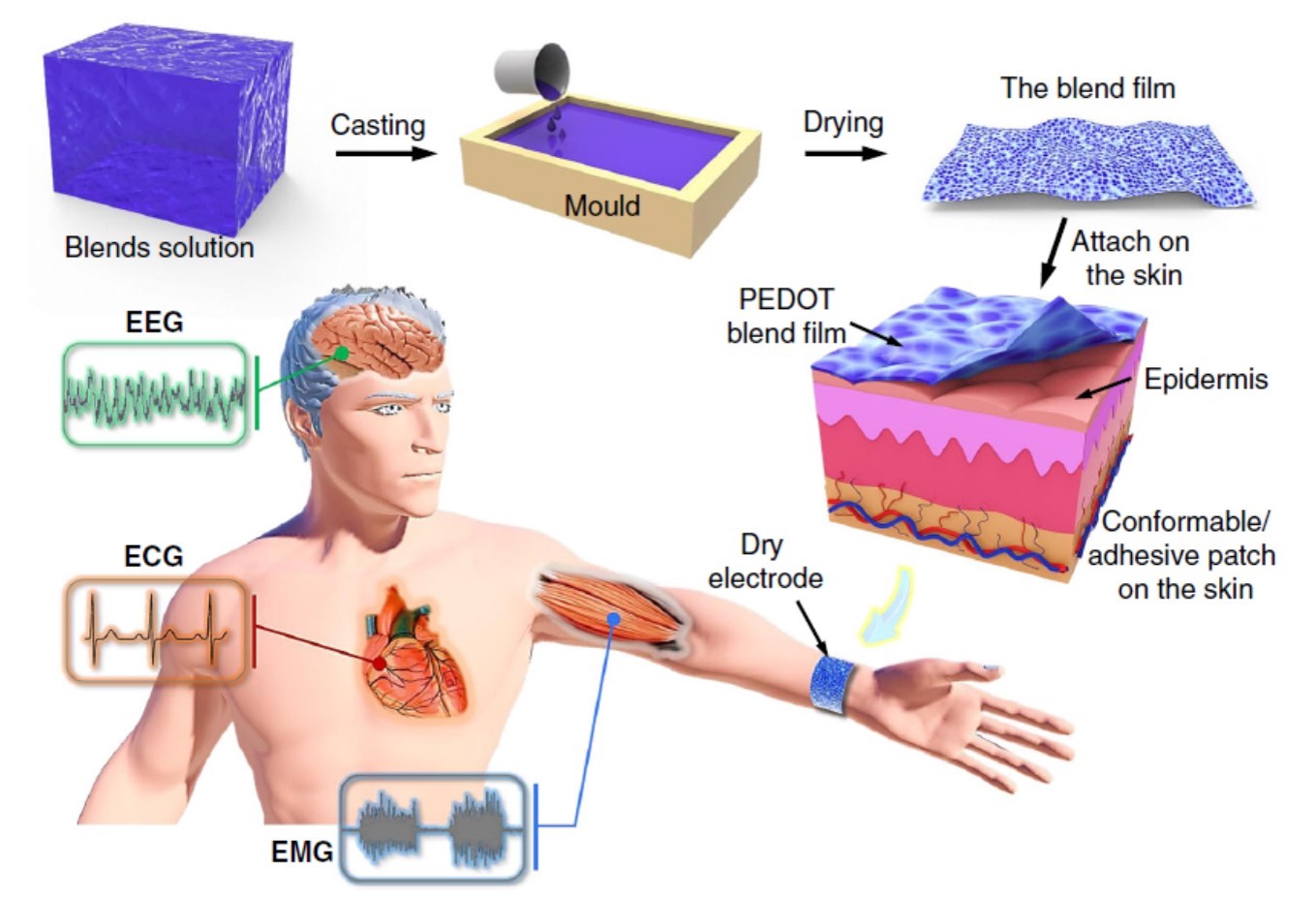Self-adhesive Dry Electrodes for Biopotential Monitoring
Opportunity
In hospitals worldwide, it’s common to see patients hooked up via wires to machines measuring the electrical activity of body parts ranging from the heart and skeletal muscles to the brain. At the core of these intricate systems are devices called biopotential electrodes, which convert ionic current from the body or biopotentials into detectable electrical signals.
Accordingly, these currents can be used to diagnose life-threatening conditions like congenital heart defects and epilepsy. Given the insights they offer, the medical electrodes market is expected to reach US$1.02 billion by 2027.
Currently, Ag/AgCl gel electrodes are used to measure biopotentials in clinical setting. However, these electrodes are not suitable for long-term use, as the gel that serves as a conductor between the skin and electrode can irritate the skin. Moreover, these wet electrodes are prone to signal degradation once the gel dries up.
Alternatively, dry electrodes in the form of a thin metal film can also be used. However, the non-adhesive and non-stretchable nature of these metals can give rise to inaccurate biopotential reading called motion artifacts, particularly when the body is moving. Hence, there is a need for a flexible and self-adhesive dry electrode that can monitor biopotentials long-term even in complex daily conditions.
Technology
This invention describes a dry electrode that uses an inherently conductive polymer film. The polymer, being self-adhesive and stretchable, allows for better skin contact at all times thus reducing the occurrence of motion artifacts.
The novel dry electrode is a biocompatible blend of PEDOT:PSS, waterborne polyurethane (WPU), and D-sorbitol, with each component respectively imparting high conductivity, high flexibility, and improved skin adhesion. This novel dry electrode called PWS is made by mixing the aforementioned components together and casting the resulting solution into a mold.
Unlike other biopotential electrodes, the invention’s function is unaffected by active body movements and sweat secretions owing to its excellent flexibility and adhesive properties. It can also be used for longer times as it does not require a gel for conductivity between the skin and the electrode. Moreover, the exceptional skin contact enables the users to acquire high-quality electrocardiogram (ECG), electromyogram (EMG), and electroencephalogram (EEG) signals in dry and even in wet (sweaty) conditions.
The versatility of this invention could revolutionise wearable electrode technology by making long-term biopotential monitoring more comfortable and convenient for the patients. Beyond the hospital, it also opens opportunities in human-machine interfaces via the direct control of humanoid robotic hands.

Self-adhesive dry electrodes for long-term biopotential monitoring.


